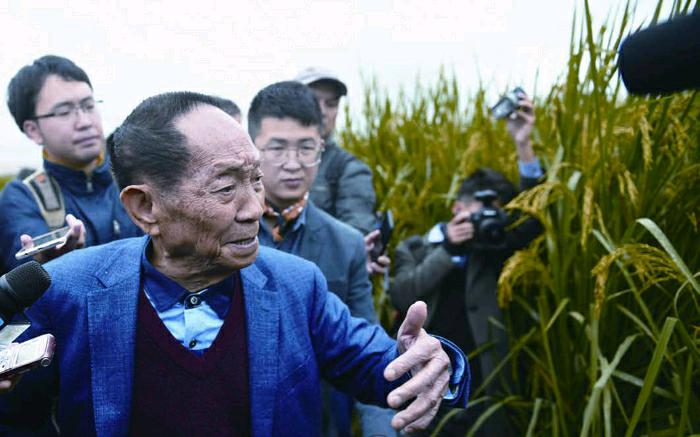National Treasure Babies
2017-11-09
Giant panda cubs on display at the Bifengxia Base of the Chinese Giant Panda Conservation and Research Center in Yaan, southwest Chinas Sichuan Province, on October 13. The center has celebrated the birth of 42 cubs so far this year.
Lawyer Mediation System
China will pilot a lawyer mediation system in nine provinces and two municipalities in an attempt to better resolve civil and business confl icts.
A new guideline jointly issued by the Supreme Peoples Court and the Ministry of Justice encourages lawyers to play a more active role as a third party in the mediation process to assist disputing parties to resolve confl icts through negotiation.
Lawyers will be allowed to work as mediators at mediation offi ces set up at local courts and tribunals, legal service centers, lawyer associations and qualifi ed law fi rms.
The measure is expected to improve the effi ciency of resolving civil and commercial disputes, save legal resources and reduce litigation costs.
The new measure is the latest addition to Chinas mediation system. China has been adopting a “peoples mediation” method to resolve disputes outside judicial proceedings.
In 2010, the nations legislative organ promulgated the Law on Mediation.
Under the guidance of the law, China has established peoples mediation committees in villages, townships, towns, enterprises and public institutions to handle the mediation process.
Administrative and judicial mediation have also been used in China to handle disputes outside judicial proceedings.
Battling Online Crime
A total of 710 people were charged with online crimes in the first nine months of this year, up 80.7 percent year on year, Chinas Supreme Peoples Procuratorate (SPP) said on October 16.
The SPP indicted 334 cases in the same period, an increase of 82.5 percent year on year, according to SPP spokesperson Wang Songmiao.
“Cybercrimes are increasingly organized and operated in groups, especially cyber gambling and fraud,” Wang said.
“We have seen more and more forms of cybercrime, including cyber attacks, cyber fraud, cyber pornography and cyber gambling. Also, crimes of infringement of personal information, online rumorspreading, cyber blackmail, cyber terrorism and selling drugs online have continued to rise,” Wang said.
Wang said the number of cybercrimes, including cross-border cybercrimes, would keep rising in the foreseeable future.endprint
In order to tackle the problem, prosecution authorities will research the new features of online crime and adopt measures to control it.
The SPP will research several areas of cybercrime, including its defi nition, conviction standards and the verifi cation of digital evidence.
“The SPP will, in a joint effort with the Supreme Peoples Court and the Ministry of Public Security, formulate legal interpretations and guidelines. Relevant training will be strengthened to cultivate professionals [who tackle] cybercrime,” Wang said.
More effort will be made to work with fi nancial and telecommunications enterprises to crack down on online crime.
The SPP will increase international judicial assistance by creating systems to share information and conduct joint training. It will also coordinate with prosecutors in other countries on jurisdiction confl icts, arrests, extradition and transferring evidence.
Overseas Returnees
A recent survey showed overseaseducated Chinese still prefer to work in Chinas fi rst-tier cities after returning home.
About 18.6 percent of respondents returning from overseas chose to work in Beijing, followed by Shanghai, Guangzhou and Shenzhen with 15.6 percent, 13.4 percent and 12 percent respectively, according to the survey, which was jointly released by Chinas major job search websites and a study abroad agency.
Emerging cities such as Hangzhou, Wuhan, Nanjing, Chengdu and Suzhou are also popular among returned Chinese looking to fi nd work.
Jobs in f niance, IT, telecommunications, electronics, the Internet sector and education are the top choices for returnees, according to the survey.
Nearly 50 percent of respondents had done some form of career planning either before or during their study abroad, the survey said.
China is currently in the middle of its biggest ever infl ux of returning overseas-educated graduates.
According to another survey, released on August 30 by the Center for China and Globalization (CCG), a major Chinese think tank, more than 2.65 million Chinese who studied overseas had returned to China by the end of 2016.
In 2016 alone, more than 432,000 foreign-educated Chinese returned to the country, up 58.48 percent from the number in 2012.
College Entrance
Since the 18th Communist Party of China (CPC) National Congress in 2012, the CPC Central Committee has prioritized the development of education and continuously improved public services and governance in the area.endprint
Today, nine-year compulsory education in primary and junior high schools is universally available across the country, and senior high school education is almost universal.
The gross rate of admission to pre-school kindergartens has reached 77.4 percent, while that for higher education has reached 42.7 percent.
As many as 91.5 percent of students at vocational schools are exempted from tuition fees; subsidies cover over 40 percent of students at such schools, and scholarships cover over a quarter of them.
A total of 30 provinces now allow children of migrant workers to sit the college entrance exam in the area where their parents work, benefi ting 150,000 students.
The CPC Central Committee has also decided to comprehensively deepen reform on education, including college recruitment, to improve equality and fairness.
Confi dence and satisfaction among college students are strong. A survey completed in 2016 showed 92.7 percent of Chinese college students feel they have a clear idea about their future beyond graduation, and 95.1 percent of the students said they feel prepared for their future.
This confi dence is pushing more graduates into entrepreneurship. According to statistics from the Ministry of Education, in recent years, around 3 percent of Chinese university graduates have chosen to start their own businesses, almost double the fi gure in developed countries.
Vocational schools in China deliver almost 10 million technicians to various industries each year via integration or cooperation programs between schools and businesses.
In the past fi ve years, almost 20 million students graduated from universities, injecting new talent into Chinas hi-tech and emerging industries.
By the end of 2016, China had established educational cooperation and exchange relationships with 188 countries and regions as well as with 46 major international organizations.
It has also signed agreements with 47 countries and regions for the mutual recognition of diplomas and degrees.
China is now the worlds largest source of international students and Asias largest destination for international students.
King of Rice
Chinas “Father of Hybrid Rice” Yuan Longping is interviewed in an experimental fi eld of “giant” rice in Jinjing Town of Changsha County, central Chinas Hunan Province, on October 16. The new kind of rice can grow to a height of 2.2 meters, the Chinese Academy of Sciences Institute of Subtropical Agriculture announced on October 16.endprint

Cutting Pollution
To cut pollution in the coming months, Jinan, capital city of east Chinas Shandong Province, which is also home to more than 7 million people, will close most construction sites until further notice, according to a recent notice from the citys Urban and Rural Construction Committee.
Only a small portion of construction sites will be spared, such as the citys ongoing subway project.
North China is under intense pressure to meet clean air targets, particularly in winter, after residential heating systems are switched on in mid-November.
A Cultural Bridge
Contestants attend the launch ceremony of the 10th Chinese Bridge Chinese Profi ciency Competition for Foreign Secondary School Students in Kunming, southwest Chinas Yunnan Province, on October 17.
GDP Growth
Chinas GDP expanded 6.9 percent year on year in the fi rst three quarters of this year to 59.33 trillion yuan ($8.9614 trillion), data from the National Bureau of Statistics (NBS) showed on October 19.
The growth rate held steady from a 6.9-percent increase in the fi rst half of this year and is well above the governments target for the year of 6.5 percent, refl ecting a continued fi rming trend in the nations economy.
In the third quarter, GDP was up 6.8 percent year on year, compared with 6.9 percent in the second quarter, according to NBS data.
“The Chinese economy has maintained steady growth with a positive outlook in the fi rst three quarters,” NBS spokesperson Xing Zhihong told a press conference. Improvements have been made in both economic structure and growth quality, and new growth engines are gaining steam, he said.
CPI and PPI
Chinas consumer infl ation retreated mildly in September, weighed down by dropping food prices, while growth in factory-gate prices hit a six-month high on strong domestic demand for raw materials.
The consumer price index (CPI) grew 1.6 percent year on year in September, slowing from Augusts 1.8 percent, but still faster than Julys 1.4 percent, the National Bureau of Statistics (NBS) said on October 16. It was the eighth straight month the main gauge stayed beneath the 2-percent mark.
On a monthly basis, the index was up 0.5 percent, slightly higher than the 0.4 percent seen in the previous month.
NBS statistician Sheng Guoqing attributed the milder infl ation to lackluster food prices, which account for a signifi cant part of the CPI calculation. “Food prices declined 1.4 percent from a year ago, contributing 0.28 percentage points to the slowdown,” said Sheng.endprint
In contrast with the tame CPI, Chinas producer infl ation, which has been soaring since the end of 2016, registered the fastest growth since April. The producer price index (PPI), which measures costs for goods at the factory gate, was up by a forecast-beating 6.9 percent year on year in September, accelerating from 6.3 percent in August. On a month-on-month basis, the index was up 1 percent in September.
For the January-September period, the PPI climbed 6.5 percent year on year, an encouraging sign for an economy seeking to renew growth momentum amid lingering downward pressures.
Robust Manufacturing
Staff work in the assembly shop of the Cangzhou factory of Beijing Hyundai Mortor Co. Ltd. on October 16. The factory witnessed its 100,000th car roll off the production line the same day. With a total investment of 12 billion yuan ($1.81 billion), the factory began production on October 18, 2016.
Fiscal Revenue and Spending
Chinas fi scal revenue and expenditure both registered steady growth in the fi rst three quarters of this year on the back of strong economic growth.
Fiscal revenue rose 9.7 percent year on year to 13.41 trillion yuan ($2 trillion) in the fi rst nine months, the Ministry of Finance said on October 16 in a report.
In the same period, fi scal expenditure rose 11.4 percent to 15.19 trillion yuan ($2.29 trillion), with central and local governments implementing the budget expenditure faster than in the same period last year.
“The steady economic growth with sound momentum laid a solid foundation for strong fi scal revenue and expenditure growth,” the report said.
China has pledged a more proactive and effective fi scal policy this year, with the fi scal defi cit set at 3 percent of GDP, or 2.38 trillion yuan($360 billion), up 200 billion yuan($30 billion) from 2016.
In September alone, fi scal revenue rose 9.2 percent and expenditure increased 1.7 percent.
Subway Cars Go Overseas
The fi rst China-made subway cars tailored for Bostons orange line rolled off the production line in Changchun, capital of northeast Chinas Jilin Province, on October 16.
The subway cars, which will be delivered to the United States in December, are among a 284-carriage order signed by CRRC Changchun Railway Vehicles and the Massachusetts Bay Transportation Authority (MBTA) in December 2014.endprint
“With completely independent intellectual property rights, China-made subway cars have met U.S. standards in terms of control security, quality management and vehicle strength,” said Yu Qingsong, deputy chief engineer of CRRC Changchun.
“These next-generation vehicles will be the backbone of our heavy rail fl eet for many years to come,”said Jerry Polcari, chief procurement offi cer of the MBTA.
The U.S. rail transit market has strict requirements in terms of technology, localization and law.
The 2014 deal, intended for the orange and red lines of the Boston subway, was the first time a Chinese train car maker won a bid in the U.S. market.
ODI and FDI
Chinas non-fi nancial outbound direct investment (ODI) dropped 41.9 percent year on year in the fi rst three quarters, offi cial data showed on October 17.
Chinese companies invested a total of $78 billion in 5,159 enterprises of 154 countries and regions from January to September, according to the Ministry of Commerce(MOFCOM).
The investment mainly went to the leasing and commercial services, manufacturing, wholesale and retail, and information technology sectors.
Outbound investment to countries involved in the Belt and Road Initiative stood at $9.6 billion during the period, accounting for 12.3 percent of the total ODI, up 4 percentage points from the same period in 2016.
Chinas ODI has seen rapid growth in recent years. However, noting an “irrational tendency”in outbound investment, Chinese authorities have since last year set stricter rules and advised companies to make investment decisions more carefully.
On the other side, foreign direct investment (FDI) onto the Chinese mainland rose 17.3 percent year on year to reach 70.63 billion yuan($10.7 billion) in September, accelerating from the 9.1-percent rise seen in August, according to data from MOFCOM.
In the fi rst nine months, the FDI infl ow totaled 618.57 billion yuan ($93.33 billion), up 1.6 percent, compared with the 0.2-percent drop during the January-August period.
Great Trade Exhibition
Businessmen examine home appliances at the 122nd Canton Fair, which opened in Guangzhou, south Chinas Guangdong Province, on October 15.
More U.S. Treasuries
China continued to increase its holdings of U.S. Treasury securities in August and remained the largest holder of such instruments.
China raised its U.S. treasuries holdings by $34.5 billion in August, bringing its total holdings up to $1.2 trillion, the latest data from the U.S. Treasury Department showed on October 17.
Japan, which overtook China as the largest holder of U.S. treasuries last October, cut its holdings by $11.4 billion to $1.1 trillion in August.
Chinas forex reserves rose for the eighth month in a row in September, as pressure from capital outfl ow eased.
In January, Chinas forex reserves plunged below $3 trillion, but as the economy now stands on a fi rmer footing and the Chinese yuan continues to stabilize, the stockpile has increased steadily since February.
Bumper Harvest
Farmers sort apples in a village in Yiyuan County, Shandong Province, on October 14.endprint
